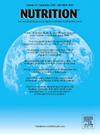Global Leadership Initiative on Malnutrition (GLIM) plus Patient- and Nutrition-Derived Outcome Risk Assessment Score (PANDORA) predicts intensive care mortality: A 180-day follow-up study
IF 3.2
3区 医学
Q2 NUTRITION & DIETETICS
引用次数: 0
Abstract
Background and Aim
Malnutrition is strongly related to mortality in intensive care unit (ICU) patients. The Patient- and Nutrition-Derived Outcome Risk Assessment Score (PANDORA) is a novel mortality prediction tool encompassing nutritional assessment. Since there is limited evidence regarding the power of PANDORA in predicting mortality in critically ill patients, we aimed to evaluate the benefit of adding PANDORA to the Global Leadership Initiative on Malnutrition (GLIM) for mortality prediction in the ICU setting by comparing it with the other valid mortality predictors.
Methods
A total of 251 ICU patients were enrolled in the study. Malnutrition evaluation tools (i.e., GLIM criteria, The nutritional risk screening 2002, The modified Nutrition Risk in Critically Ill score), and mortality/disease severity tools (PANDORA, The Acute Physiology and Chronic Health Evaluation II score, Sequential Organ Failure Assessment) were performed. Scores ≥43 were defined as high PANDORA score.
Results
The median age (IQR) of participants was 67 (52–78) years, and 47.0% (n = 118) were female. Patients were evaluated according to 30th, 60th, 90th, and 180th-day mortalities. In all groups, patients were older, had a lower body mass index and longer hospitalization time, and were more likely to have malnutrition and higher PANDORA, Acute Physiology and Chronic Health Evaluation II, and Sequential Organ Failure Assessment scores. In the Cox regression analyses, even if adjusted for various confounders, malnutrition according to GLIM criteria and a high PANDORA score had the highest hazard ratio (HR) for mortality (HR: 3.62; 95% confidence interval [CI]: 1.49–8.77; P = 0.004, HR: 3.71; 95% CI: 1.69–8.12; P = 0.001, HR: 3.46; 95% CI: 1.69–7.06; P = 0.001 and HR: 4.00; 95% CI: 1.98–8.09; P = 0.004 for 30th, 60th, 90th, and 180th days, respectively).
Conclusions
PANDORA is a valid tool for predicting mortality in ICU patients. Furthermore, to our knowledge this is the first study to reveal that integrating GLIM criteria into PANDORA may enhance its power in this setting.
求助全文
约1分钟内获得全文
求助全文
来源期刊

Nutrition
医学-营养学
CiteScore
7.80
自引率
2.30%
发文量
300
审稿时长
60 days
期刊介绍:
Nutrition has an open access mirror journal Nutrition: X, sharing the same aims and scope, editorial team, submission system and rigorous peer review.
Founded by Michael M. Meguid in the early 1980''s, Nutrition presents advances in nutrition research and science, informs its readers on new and advancing technologies and data in clinical nutrition practice, encourages the application of outcomes research and meta-analyses to problems in patient-related nutrition; and seeks to help clarify and set the research, policy and practice agenda for nutrition science to enhance human well-being in the years ahead.
 求助内容:
求助内容: 应助结果提醒方式:
应助结果提醒方式:


